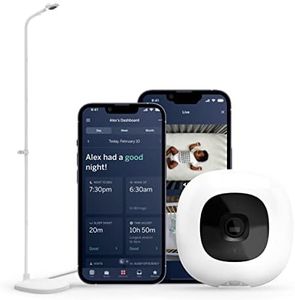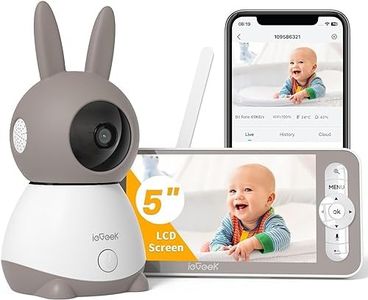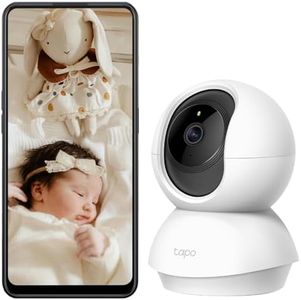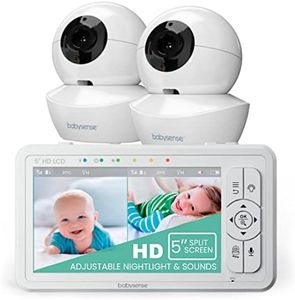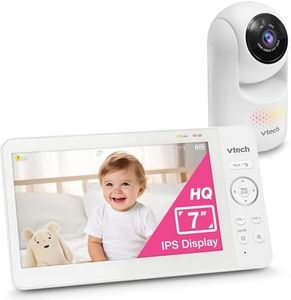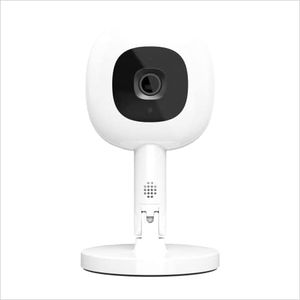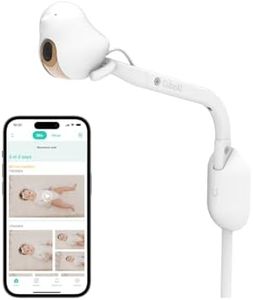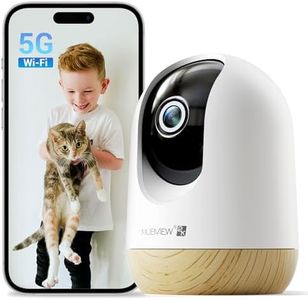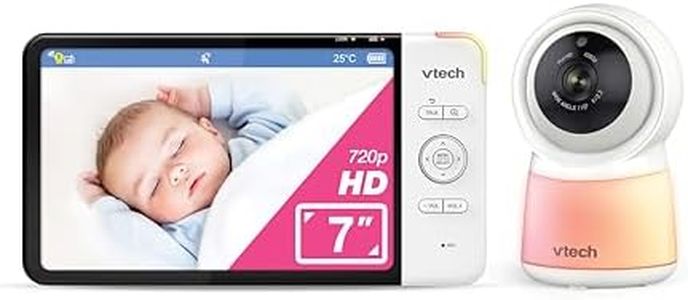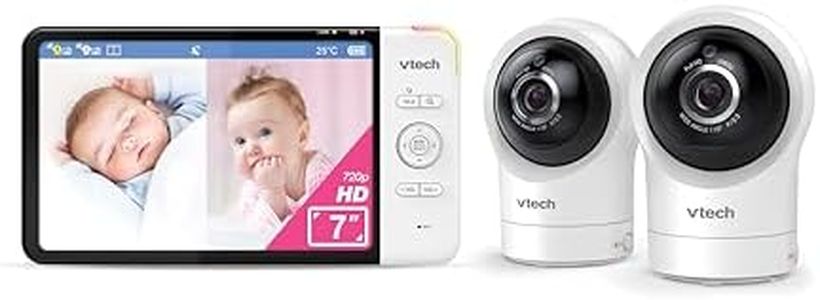We Use CookiesWe use cookies to enhance the security, performance,
functionality and for analytical and promotional activities. By continuing to browse this site you
are agreeing to our privacy policy
10 Best Baby Monitor Cameras
From leading brands and best sellers available on the web.By clicking on a link to a third party's website, log data is shared with that third party.
Buying Guide for the Best Baby Monitor Cameras
Choosing a baby monitor camera can help give you peace of mind while your little one sleeps or plays in another room. The goal is to find a camera that suits your living space, lifestyle, and main concerns, such as seeing your baby clearly, hearing them, and staying connected when you’re not right next door. Think about where you’ll use the camera, what features help you feel secure, and how easy you want setup and daily use to be.Video Quality (Resolution)Video quality refers to how clear the image from the camera appears on the monitor or your smartphone. Common options include standard definition (SD), high definition (HD), and full HD. A higher resolution means you’ll see finer details, like your baby’s facial expressions or gentle movements. If you just want to check if your child is moving, lower resolution might be plenty, but if you need to monitor details or have a larger room, higher resolution is often more reassuring.
Audio CapabilityAudio lets you hear your baby, so you’ll know if they wake up, fuss, or cry. Basic models offer one-way audio (you hear your baby), while more advanced ones have two-way talk so you can comfort them remotely. If you want to soothe your baby without entering the room or if the nursery is far from your main space, two-way audio may be essential. But if listening is your priority, one-way audio is generally enough.
Night VisionNight vision lets you see your baby clearly even in complete darkness, using invisible infrared light. If you’ll be checking in mostly at night or in a dim room, strong night vision is helpful. Cameras vary in how far they can ‘see’ in the dark; if your baby’s crib is close to where the camera is mounted, most options will work, but for larger rooms or more flexibility in placement, look for extended night vision range.
RangeRange describes how far the camera and monitor (or your phone) can be from each other and still transmit sound and video. Wi-Fi models typically have unlimited range as long as you’re connected to the internet, while non-Wi-Fi models may have a set range, such as within one or two floors of a house. If you want to monitor from outside your home or while travelling, Wi-Fi is best. For local use in the same building, check that the stated range fits your home layout.
Power SourceThe power source determines if the camera runs on batteries, plugs into the wall, or has a rechargeable battery. Plug-in models are more reliable for 24/7 monitoring but need an outlet. Battery and rechargeable options offer flexibility to place the camera anywhere, but may need frequent recharging or battery changes. Consider if you want the freedom to move the camera around or prefer something that's always ready to go.
Monitor Type (Dedicated or App-Based)Some baby monitors come with their own handheld screen (dedicated monitor), while others use your smartphone or tablet through an app. Dedicated monitors avoid interruptions from phone calls or notifications, and are often more straightforward to use. App-based models are more flexible, letting you check in from anywhere. Think about whether you want a separate device, or if you are comfortable using your phone for monitoring.
Security and Privacy FeaturesSecurity features protect your feed from being accessed by others. Wi-Fi enabled cameras should use encrypted connections and strong passwords. Some cameras let you set up user access or require two-factor authentication. If privacy is a top concern, look for cameras that focus on secure transmissions and avoid sharing video outside your home network—especially important if you plan to use remote viewing.
Additional Functions (Lullabies, Temperature, Motion Detection)Many baby monitors offer extras like playing lullabies, measuring room temperature, or sending alerts when your baby moves or makes noise. Decide which features match your parenting style: alerts can help if you’re not always watching the screen, temperature sensors can inform you of comfort, and lullabies can help soothe your child remotely. Pick the extras you’ll really use, instead of being swayed by ones that sound nice but might be unnecessary for your household.
